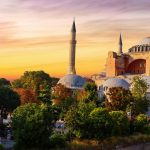Upon arrival I was quickly ushered to an awaiting bus for the 19 kilometer ride to my hotel in Saket, a suburb of New Delhi. Riding into the city, I registered the olfactory assaults that signal the beginning of an Indian journey. From the humid streets, the smell of open sewers and thousands of pedestrians body odors mixed with the scent of spices, tobacco smoke, diesel exhaust, and flowers to create a uniquely Indian blend. At times, the sickly sweet trace of the insecticide Deet wove this jumble of scents into a familiar, almost pleasant fragrance. Sometimes, during the rest of my journey, I wished I had no sense of smell at all. But like the poor and the beggars, the odors are a permanent fixture.
In my first few moments, in the shock of getting off the plane, it all seemed too much. The aromas, the river of chemically polluted, silver-gray water in the gutters, and the poor on the streets. Amid all this squalor was the incongruous and ubiquitous presence of Pepsi, which seemed to have a corner on the Indian market. The familiar corporate emblem could be seen everywhere. I even saw a Coca-Cola billboard being painted over with its rival’s red, white, and blue. About half of each logo was visible a strange juxtaposition.
GOOD BRAKES AND GOOD LUCK
In India, there are people everywhere: hanging out the backs of old buses, walking the dirty streets, riding thousands of dilapidated bicycles on streets built for hundreds, manning roadside stalls, and just hanging around on the sidewalks. There were more people than I could have imagined, spilling out of every nook and cranny, every moment of every day. It’s hard to fathom the bizarrely precise count of 1,049,700,118 people in the world’s second most populous nation, but on the jam-packed streets of Delhi, the abstract figure turns suddenly, mindbogglingly concrete.
This critical mass somehow manages to move peaceably about the city with only selective adherence to recognizable traffic laws but with a good deal of blind luck. Walking, however, is one thing. Driving is quite another. I’m certainly an experienced bus rider, but since I had no desire to either sardine myself over to Agra or commit auto-suicide driving on my own (this from a frequent Los Angeles freeway navigator!), I got over my neocolonial hesitations and hired a car and driver. My large, cheerful, turbaned Sikh driver, Mr. Singh, deftly maneuvered our tiny white Toyota through city traffic. When we came to a two-lane, ill-paved road that connected Delhi and Agra (home to the Taj Mahal) and launched out into the countryside, I assumed, wrongly, that traffic would ease. Country driving proved even more perilous as we lurched through an unending stream of oncoming travelers in every kind of vehicle imaginable: bus, car, bicycle, camel, elephant.
Just to add to the intense chaos, there were the cows wandering the streets. Sacred in mostly Hindu India, these cows, though hauntingly thin, are treated with the utmost respect. I never saw anyone lift a hand to them – not even to direct them out of the way of a line of clogged traffic. Perhaps luckily, however, the sacred cows migrated from the road to the patchy median strips and parked themselves there, placidly watching motorists, buses, and cyclists miss them by inches throughout the day.
To a soundtrack of horns and Mr. Singh’s frequent bursting into song, we played a six-hour, 240-kilometer game of dodgeball: Us versus everything from lorries to potholes to hairy wild hogs. My strategy was to stare fixedly at the plastic dashboard shrine to the white-bearded Guru Nanak, founder of the Sikh religion. The shrine had a series of flashing red lights around its base, but the blipping and beeping did not seem to bother Mr. Singh. He drove us into certain death, interrupting his prayers and folk tunes and exclaiming only when there was a real narrow miss. He told me that in India you need only three things in order to drive: good horn, good brakes, good luck. He roared with waves of laughter so contagious that I burst out laughing, too. You know, laughter being the best medicine for near heart attacks and all.
THE ECONOMICS OF INDIA
Less amusing were the small curio shops that dotted the roadside selling knit sweaters and cheap metal idols. While Mr. Singh was refueling at a gas station, I explored the deserted aisles of one stall. All of a sudden three men appeared and watched my every move from behind the rickety display counters. Pretending disinterest in my browsing, one of the thin, dark men casually inspected the inlay work on a jewelry box while another combed his hair in an antique mirror, keeping his eye more on me than on his reflection. Eventually I counted seven employees and I was their only customer.
Although I quickly made a purchase and left, uncomfortable and unsure exactly why, I realized later that the atmosphere had been fraught with anxiety: The proprietors had simply wanted to make a sale, any kind of sale. When my driver saw me return to the car with a brass Vishnu idol (it’s almost a requisite souvenir), he suddenly had to go back inside to “fill his water bottle” i.e., collect his commission. This is actually a normal practice in India (and in many other parts of the world), and I was often taken on “impromptu” visits to various shops owned by my driver’s friends along the way.
We reached the Hotel Agra Ashok in Uttar Pradesh late in the afternoon. It was easy to tell that it had once been beautiful and majestic, but now, desperate for tourist dollars, it was well past its glory days. This sad building, devoid of any other occupants, tried hard to live up to its grand past, but it was like an old woman wearing too much makeup. From a distance, she may appear beautiful, but don’t look too closely. Every building in Agra had this appearance: missing bricks, shutters hanging by one hinge, broken windows, stained stucco with filthy gaping holes that would never get repaired. Somehow, the glories of Indian culture and history did not prepare me for the realities of a developing country on full collision course with overpopulation, economic restructuring, and cultural change. Of course, India’s always been on this course; I just showed up mid-journey. Still, although the Agra Ashok felt a little like the Overlook in Stephen King’s The Shining, entering its lobby from the bustling streets was an eerie relief – finally, respite. For a moment, at least.
SALVATION BY SARI
Somehow, among the sprawl and crush of people, the dust and disrepair that is India, the women consistently appear wearing immaculate, perfectly wrapped, multicolored saris.
Every hue is represented, and each provides a stark contrast to the dust-brown streets. My eyes were magnetically drawn to deep blues, pollen yellows, palm-frond greens, and poppy reds. The saris and lehengas and other traditional outfits were breathtaking and elegant, some decorated with jewels and ornate patterns, others minimalist beauties. The saris are the epitome of Indian femininity and are simultaneously conservative and seductive. I was lucky enough to accompany an Indian-American woman shopping for one and got a behind-the-scenes look at the culture of sari hunting, a delicate back-and-forth that involves unending offers of tea from merchants. The emphasis is on creating or maintaining a courteous and mutually beneficial relationship between customer and salesman. Hours can be spent finding just the right combination of color, fabric, and pattern to make the perfect sari. This unhurried, intricate, and highly pleasurable (“More tea? Why, thank you!”) shopping experience seemed a million miles from the hectic energy outside.
Later that day, I went to the Taj Mahal, the eternal tomb of the Mughal empress Mumtaz, and, of course, it was stunning. I stayed there for hours. As the day grew longer, the sunlight changed the seventeenth-century mausoleum from brilliant morning white to golden noon, then the pink of late afternoon.
As impressive as it was, the Taj Mahal was not the highlight of my visit. I spent ten days in India, and despite the appalling poverty, the crush of the crowds, and the ambience of decay, the paramount image in my mind is the sight of those exquisite saris. Somehow, they were emblematic of the Indian spirit: such serenity! That first day was merely a jumble of impressions the smell, kindness, squalor, laughter, overcrowding, dignity, peace, and, curiously, hope of a land beginning to admit the twenty-first century into its graceful civilization.



